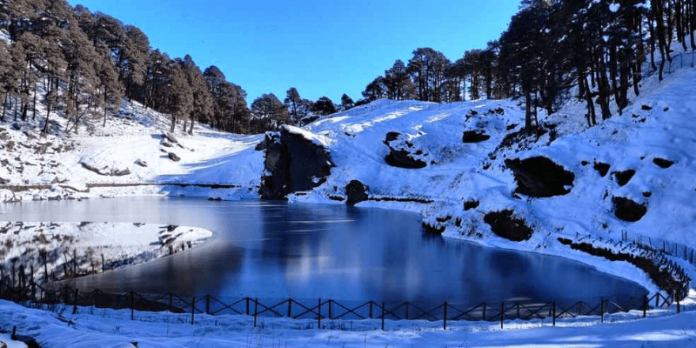The hill state of Himachal has all kinds of beautiful treks, the Jalori Pass trek for one. Known for its beauty, it is the only Indian trek opening every year and is reachable by car. If you want to trek to it, it is a 10-day trek. So, it’s time to visit Jalori Pass, enjoy the place’s scenic beauty, see diverse flora and fauna, and come back refreshed to take the rigors of life frontally. And, for all the place-specific information, Duniakagyan is here to help.
Location
Jalori Pass lies in the Kullu district and connects Kullu and Shimla. Lying in the Northern Himalayas, it is approximately 10500 feet above sea level. It is a narrow and steep trek with bumpy roads, which makes driving risky. You can reach it from Kullu as well as Shimla. The trek is beautiful with mesmerizing views, cool breeze, green forests and various flora and fauna. You will come back home with some eternal memories. There are some great attractions and several eateries on your way. The Jibhi distance from Delhi is 520 km, making it the nearest trek from Delhi.
History Of Jalori Pass

The history of Jalori Pass dates back to the British era. This pass was discovered by British Officers who wanted access to Kullu. Back then, the British had taken a liking for Himachal Pradesh due to its weather conditions and terrains that resemble their native land. And Kullu, one of the state’s most picturesque towns, couldn’t escape their eyes.
Penelope Chetwode, the daughter of a British Commander-in-Chief in the late 1920s, wrote a book on the valley titled “Kullu: The End Of Inhabitable World”. The book elaborates on Kullu’s ancient name being Kulantpitha, which meant “The End of Inhabitable World”. According to the author, you will understand why it was called so only upon visiting the Rohtang Pass. The villagers liked the lady because of her frequent voyages and deep knowledge of and interest in the Kullu Valley.
Why Visit Jalori Pass?
Jalori Pass makes it to the “to do” list of most trekkers. But if you still need reasons to visit it, here are a few compelling ones:
- The trek is full of adventures. The road is as steep, bumpy, narrow, and threatening as it gets. Driving among the trees and abundant beauty at such a height is just magical.
- There are several places where you can stop and camp or trek to. The presence of temples, parks, birds, and nice places to eat and stay makes it a comfortable and pleasurable trek in terms of accommodation and food.
- Even though Jalori Pass is popular among trekkers and adventurers, it is an offbeat destination. It doesn’t even have a Wiki page. Fewer crowds mean more peace, calm and serenity. The trek is isolated for the most part.
- The beauty of the place is simply magical. Even if you could imagine the most exotic places in India, you wouldn’t have imagined this. It’s a paradise replete with some stunning natural, religious, cultural and historical attractions. Think Serolsar Lake, Tirthan Valley, Jalori Mata temple, and more. You will see various hamlets en route, captivating with their unique rural cultures. The coniferous trees, wildflowers, and beautiful birds accompanying you on the top add to the appeal of the Jalori Pass.
How To Reach Jalori Pass?
First, you must arrive at Kullu or Shimla. If you take the flight, you should reach Bhuntar Airport from Delhi, Chandigarh, Amritsar, Ambala, Ludhiana, Jalandhar, and other major cities. From Bhuntar, it’s easy to reach Kullu. You can also take a train to Shimla, which is the closest railway station to Jalori Pass.
The Shimla route: Shimla- Luhri – Ani – Jalori Pass.
The Kullu route: Kullu- Banjar- Ghiyagi- Shoja- Jalori Pass
The distance from Kullu to Banjar is 53 km, and Jalori Pass is 18 km from Banjar. The distance from Shimla to Jalori pass is 115 km approx. Most people prefer starting from Kullu. If you are travelling by vehicle, it will take around 48 hours to accomplish the trek.
Reaching Jalori Pass from Shimla
You can arrive in Shimla via train or your vehicle. If you wish, you can stay at Shimla, but to start the next day early, you can drive two more hours to Narkanda. The accommodation facilities in town are good and comfortable. The next day, visit Hatu Peak. It will take you around 3 hours, but it is a place worth visiting. The little hamlets amidst the greenery are as perfect as one can imagine. After coming back, you can enjoy breakfast and head towards Kingal. Next, drive to Ani and then to Jalori Pass.
Getting to Jalori Pass From Kullu
Arrive in Manali, and start your day by driving to Tirthan Valley. It is a great tourist spot where you can unwind a bit and indulge in some local sightseeing. The Tirthan Valley weather is fine, especially in summers when mercury is soaring in the plains. After a long tiring day, you can spend the night at Banjar, Jibhi, or Shoja. On the next day, you can drive to Jalori Pass and spend some good time there before returning to your stay.
Reaching Jalori Pass From Manali
Jalori pass to Manali is a popular route. First, take a bus and get down at the Aut Tunnel. Aut is well-connected with Banjar via road. So, getting a bus or a cab is easy. It’s best to spend the night in Banjar. The next day, you can take a bus from Banjar to Ani, Jibhi to Jalori Pass, and Banjar to Shimla. However, we recommend you to take the bus from Banjar to Jalori Top. After spending some great time there, you can take the last bus for Banjar at 3 pm and come back to your hotel.
Trekking To Jalori Pass
If you are up for some adventure and a long vacation in the woods, you can take a tour package that includes Kullu, Manali, and the nearby attractions while trekking to the Jalori pass. It starts from Manali, where you can visit the different tourist spots like Hidimba Devi Temple, Manu Temple, Mall Road, etc. You trek from Manali to Sahiropa, Baghi, Jibhi, Shoja, to Jalori Pass, and from Khanag, Tarala, Rampur to Shimla.
If camping is what you like, visit Sainj National Park, Shringa Rishi Temple, Chehni Kothi, and Serolsar Lake. As an avid birdwatcher, you can spend time among several bird species. Also, it’s your chance to get up close and personal with Monal Pheasant and black bear, the vibrant and unique rural culture of the hamlets, the beauty of seasonal flowers, and more.
What is the Best Time To Visit Jalori Pass?
The ideal months to visit the Jalori Pass are from June to October. In winter, the snow covers the entire area, and there is no way you can drive to the pass. In the rainy season, the roads are muddy and challenging. Depending on the weather, the pass opens in March and shuts down in December. Before you go there, do check the Jalori Pass weather predictions.
The Best Way To Reach Jalori Pass
You have various options to reach there, but it’s subject to the route you prefer. Regular buses ply from Mandi, Manali, and Shimla, where you can spend the night and start your journey the next day. If traveling by a shared or private taxi, you can book your spot or hire one from Mandi, Shimla, and Manali. It helps to have a guide-cum-driver who knows the roads. If you are on a budget, shared taxis are great options.
However, driving your own car to Jalori Pass is the best option. It enables you to travel at your own pace and extend the trip if needed. But, you must drive to Jalori Top only if you are an expert driver. The road is a single narrow lane full of pits and bumps. In the rainy season, the road is muddy and slippery. In winters, the snow is as much as 20 feet. That’s why they close the pass. It is a challenging drive, and you are better off hiring an experienced driver to drive your car. Mind you, it is no beginner’s job to drive on this route.
Places To Visit Near Jalori Pass
On your way, you will find some beautiful places that will captivate you. Check them out.
1. Shringa Rishi Temple
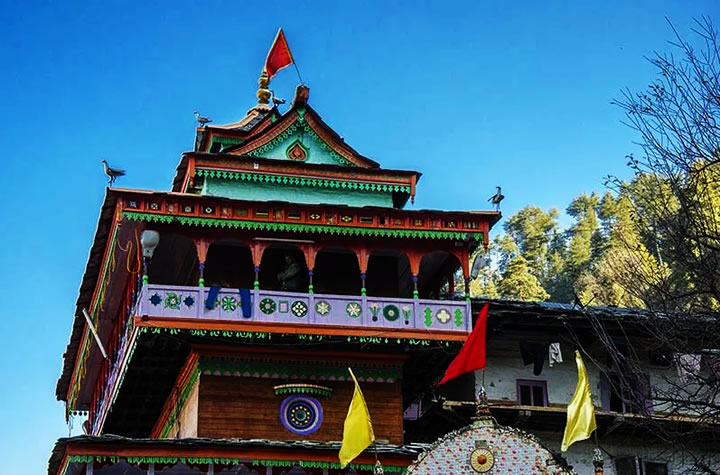
Trekkers often spend their first night at Banjar Valley, which houses The Shringa Rishi Temple. The temple lies in Baggi Village, just 6.5 kilometers from Banjar Valley. It is sacred for the locals since Shringa Rishi has been an important saint in the Ramayana era. He was Rishi Vibhandak’s son and conducted the Putreshti Yajna for King Dashratha. This yajna is said to have birth Lord Rama and his three siblings.
The Rishi is known here as Skirni Deo, and thousands of pilgrims come here in May to pay him respects. What makes the temple stand out is its intricate architecture featuring Hindu motifs. The temple was reconstructed in 2008 but retains its historic value. You can trek to the temple site from Banjar. The road is motorable, so you can also take the car.
2. Chehni Kothi
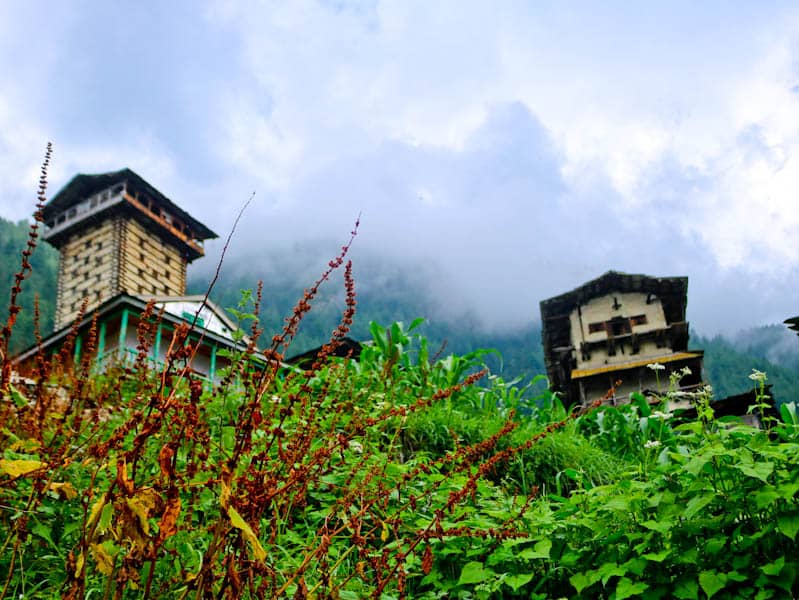
Right across the Rishi Shringi temple, there is another piece of art known as Chehni Kothi. This 1500-year-old structure has stood tall for centuries even undeterred by the 1905 earthquake. It is 7 km from Banjar and only a small trek from Shringa Rishi Temple. It is famous for its tall twin towers, which are still intact and as mesmerizing as ever.
The place was King Raja Rana Dhadhiya’s home. It is 60 feet high. You must visit the Chehni Tower here, which is also known as Bhagwati Temple. It is a nine-tier structure with four stone stories that are holding the upper structure. You will come across several Hindu idols in the tower that can be reached via the wooden staircase placed at the entrance.
The locals had run a restoration program to restore the structure of the towers. Today, these twin-tower temples are the tallest standing structures in the Western Himalayas.
3. Serolsar Lake
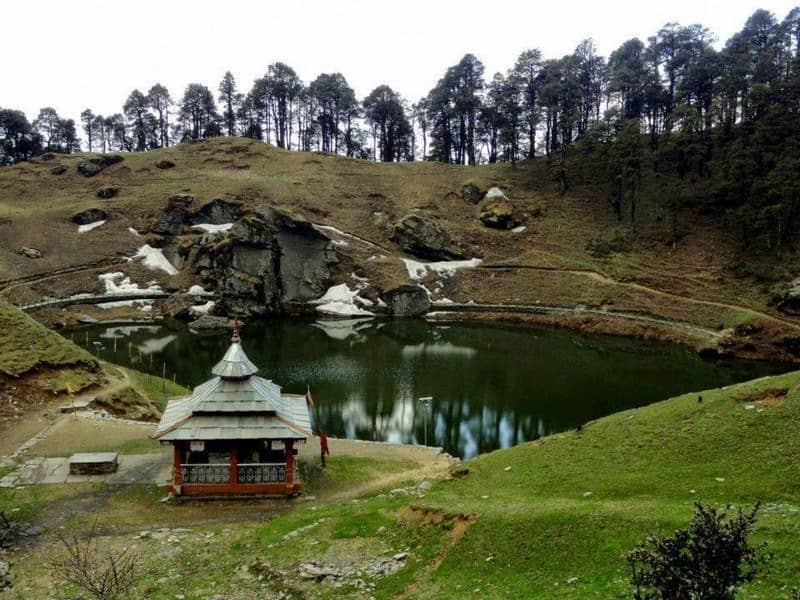
In the Kullu district of Himachal lies Serolsar Lake. You can call it the most beautiful and cleanest lake in Himachal Pradesh. Surrounded by alpine forests and abundant beauty, this lake is worth a visit. It is 5 km from Shoja and Jalori Pass. It is a 1.5-hour trek full of natural bliss.
Budhi Naagin, the old mother of snakes, is said to keep the lake clean with the help of the birds in the area. Even if a fallen leaf enters the lake, the birds put it away to keep it clean. The lake’s water is believed to have medicinal value. It is at a height of 3199 meters, and the thick forest adds to its beauty.
There is the temple of Budhi Nagin near the lake, where the tourists offer Ghee (clarified butter). You can also set up a camp here for the night as it is a perfect location. Ensure you don’t leave any garbage or plastic behind; else, Mother Naagin will be angry.
4. Great Himalayan National Park
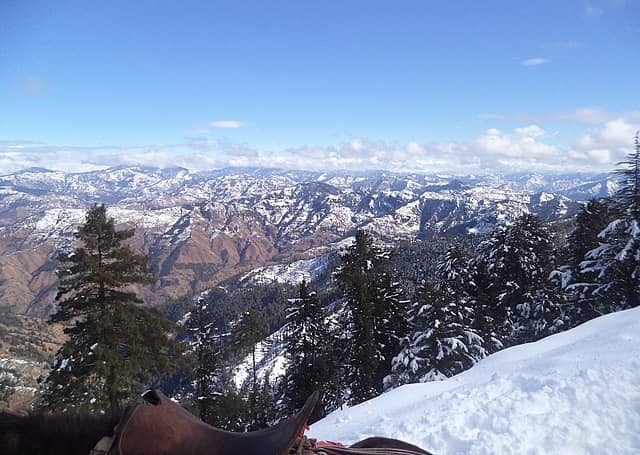
Great Himalayan National Park is among UNESCO’s World Heritage Sites for housing the varied flora and fauna in its bosom. Spread across 1171 sq. km., the park became a national park in 1999. The park houses 350 species of flora and 800 species of fauna, and some of the world’s threatened birds and animal species. It is a must-visit for every nature lover and adventure seeker. You can trek in the beautiful alpine pastures, feast your eyes on some exotic species of animals, take beautiful pictures, and spend some time with the locals who can teach you how to live in harmony with nature.
5. Tirthan Valley
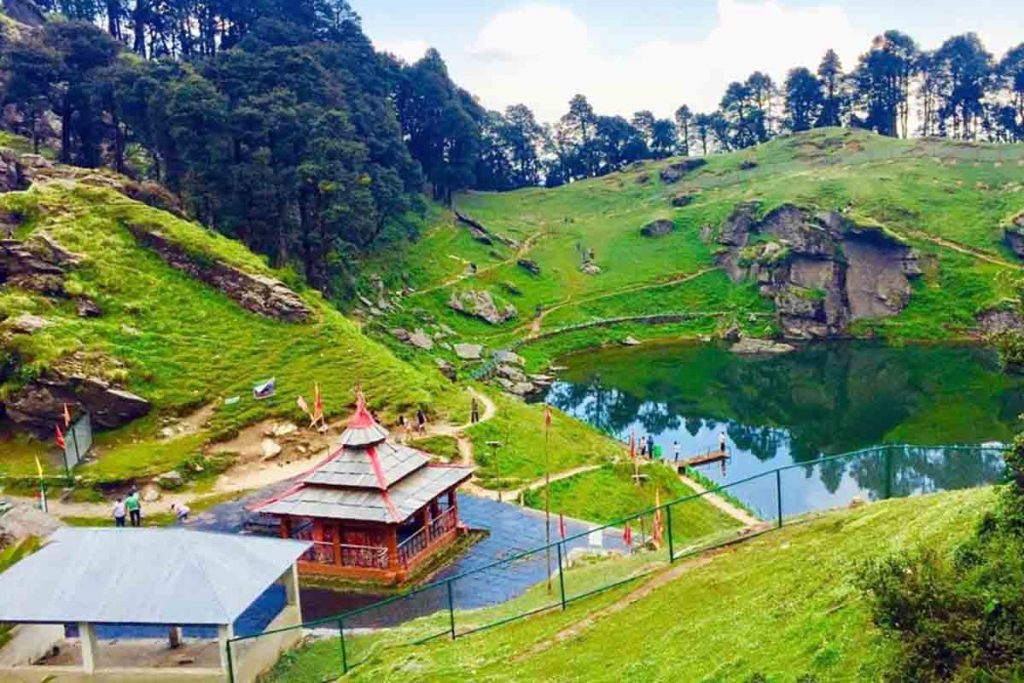
If you want the best of adventures, all in one place, visit Tirthan Valley Jalori Pass. It’s a natural offbeat destination that offers scenic beauty, adventures, peace, and everything you wish for on vacation. The valley derives its name from the Tirthan River, which flows from Hans Kund in Great Himalayan National Park and nourishes the entire place on its way.
You can see the mountains talking to the clouds in the distance. Birds are in abundance here, which wakes you up with their songs in the morning. If you trek from Rolla village, you can also find a waterfall, quietly falling among the dense forests. It is ideal for strolling, river crossing, bird-watching, trekking, fishing, and spending some time in a quaint place.
Things To Do At/ Near Jalori Pass
Apart from trekking to Jalori Pass, you can do other things like-
- Fishing
- River Crossing
- Playing in the snow (If visit in January or February)
- Bird Watching
- Photography
- Camping
- Rock Climbing
Where to Stay Near Jalori Pass?
The entire trek to Jalori Pass from Banjar is worth setting up a camp. But if you are not keen on spending the night in a small space, you can book a hotel or lodge in any nearby village. The villages en route to Jalori Pass include Jibhi, Ghiyagi, Shoja, Banjar, Gushaini, Nagini, Sai Ropa, etc. You can find a comfortable stay at any of these places. Most people on their way to Jalori Pass stop for the night at Banjar. There are numerous hotels here. Shoja is only 5 km from Jalori Pass, so you can book a room at Banjara Retreat hotel if you decide to stay here.
Camping
If you are an adventure seeker and have packed your tent, there are several sites where you can set up a camp. Feel free to set up the tent at Jalori Top itself. At such a height, you can spend a night under the star-filled sky. Another site is at Serolsar Lake. Spending a night beside the lake is on the “to-do” list of most trekkers. Around Tirthan Valley, there are several spots where you can create some starry memories.
Clothes To Pack For A Jalori Pass Trip
April to June are the best months to visit Jalori Pass. If you are going at this time, pack some light woolen clothes along with your regular cotton clothes. Boots are recommended. A windproof and waterproof jacket is also a must as the weather Jalori Pass is unpredictable.
September and October are also ideal for visiting the pass. You must pack some heavy woolen clothes, along with a windproof jacket and boots. It may start to snow early. The winds are harsh at such an altitude.
The rainy season lasts here for two months – July and August. At this time, the area receives heavy rainfall. If you are going there in the rain, you need to pack clothes that dry faster. From December, they close the pass as snowfall in this area is very heavy. So, if you go there in January and February, pack some bags with heavy woolen clothes and thick boots.
Other Facilities Near Jalori Pass
Most people are worried about their mobile networks, as staying in constant touch with the world is a priority. Note that when you are on top of the Jalori Pass, there is no network whatsoever. You may get a faint signal for BSNL, but any other network hasn’t reached here. Mobile connectivity works fine in nearby villages like Shoja, Ani, Banjar, etc. There are facilities of Banks/ ATMs, hospitals, mechanics, etc., in almost every town you come across.
Is Jalori Pass Trek Safe?
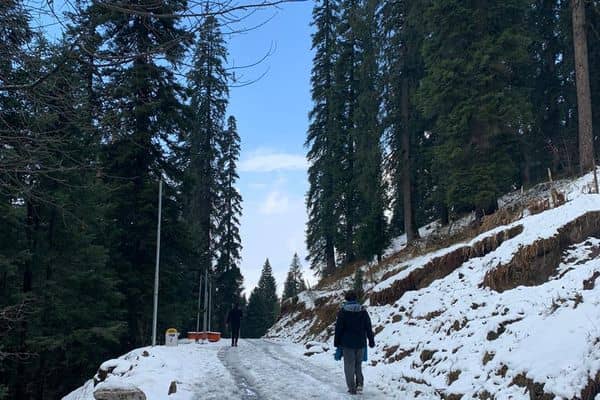
Yes, it is perfectly safe to trek to Jalori Pass. The path is narrow, steep, and bad, but if you have an expert in the driver’s seat, you need not worry. However, keep a few things in mind.
- If you have no driving experience on bumpy roads, you better take a driver from Kullu or Mandi.
- If altitude sickness troubles you, stay away from the pass. Remember, it is more than 10,000 feet high.
- Fill your tank to the brim at Kulu or Mandi itself. You won’t find many petrol pumps in villages.
- Drive only during the day. It is risky at night. The road compels you to drive in first gear only, right to the top.
- You can also drive there on a bike but only if you are 100% sure.
Items To Pack For Jalori Pass Trip
If you are a trekker, you know what to take with you. But if you are going to such a high peak for the first time, here is the list to aid you in packing.
- Personal items, including clothing and body care items
- Warm clothes, including caps, scarves, sunglasses, jackets, etc.
- Sunscreen
- Medical Kit
- Power bank
- ATMs/ Cash
- Chargers, batteries, and torches
- Boots
- Trekking shoes
- A raincoat and umbrella
- Toilet Paper
- Thermals
- Tent and camping equipment (If you are planning on camping)
Wrap Up
From the moment you plan your trip to when you come back down from Jalori Pass, everything has been included here. The guide has discussed all the important places you must visit to aid you in planning whether you need a 4-5 day tour or extend it. It also includes a complete itinerary of the ways to reach Jalori Pass. Let us know in the comments if you’ve found this guide to be useful!
People are also reading:



